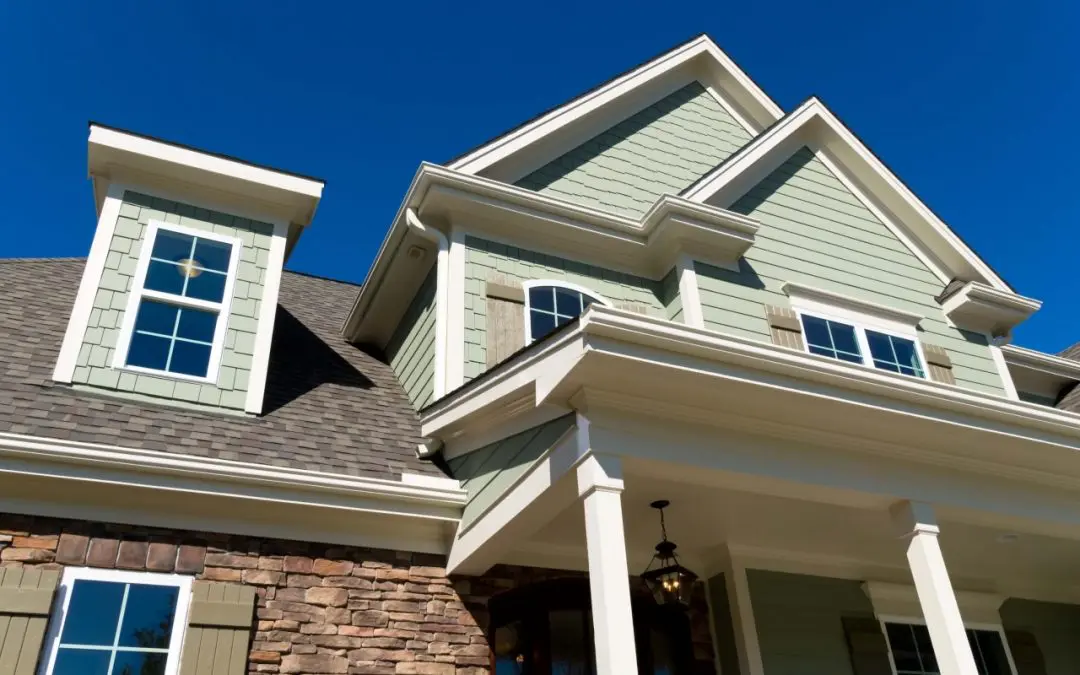Types of Home Siding Materials
Vinyl Siding
Vinyl siding is made from polyvinyl chloride (PVC) that has color added during the blending process. The resin mixture is then poured into layers using a mold. The vinyl pieces are embossed to add texture and patterns to the finished sheets.
Vinyl siding won’t rot and is insect-resistant. Termites and other wood-destroying insects can’t damage the siding. The color is part of the manufacturing process and won’t be damaged by dents or scratches. When properly installed, vinyl can withstand extreme temperatures and weather conditions.
The disadvantages of vinyl include that it is susceptible to dents and cracks. This type of siding isn’t always watertight, especially if it’s poorly installed. Vinyl siding has a plastic look that doesn’t appeal to some homeowners. Vinyl will need to be cleaned regularly to maintain its appearance.
Wooden Siding
The natural look of wood siding gives your home a classic and timeless aesthetic. There are numerous wood species available and different styles of siding. You might choose clapboard siding or a vertical installation. Wood shakes are another option. Wood requires more upkeep, which means more expense, but it will last for many years with regular maintenance.
Wood siding is easy to cut and some types can be installed by an experienced DIYer. This material is attractive and, when well-maintained, adds to the property value. At the end of its life, wood siding is biodegradable.
The downside of wood is that maintenance will be more expensive over the long run. Higher quality wooden siding is costly to purchase and install and wood is not fire or pest-resistant.
Metal Siding Materials for Your Home
Metal siding has long-term durability that outperforms other siding options. It is recyclable and often made from recycled materials. There are many options for colors and styles. Some types are installed vertically, while others are mounted horizontally.
Metal siding is a great option in areas where pests might be a problem. It can last up to 50 years without cracking, peeling, or fading. Steel siding maintains its color better than aluminum, and metal won’t rot or warp with time.
Even when coated, steel siding may rust. Salt spray, high humidity, and fog can increase the likelihood of rusting, so this type of material is not recommended for use in coastal areas. Metal siding is more expensive than vinyl and it’s best to hire an experienced installer.
Home Siding Materials: Fiber Cement
Fiber cement is noted for its durability and low maintenance requirements. It is molded to look like clapboard, masonry, or brick and is made from a mixture of wood pulp, clay, cement, and sand. It’s simple to paint and comes in a range of colors and finishes.
Fiber cement siding is long-lasting and resists contracting and expanding with temperature and humidity. It is termite, fire, and rot-resistant. This type of siding is reasonably priced and often comes with a good warranty.
One of the downsides is that fiber cement is heavy and more difficult to install. The shorter board lengths result in more labor and higher labor costs.
No matter what type of siding you choose, it’s best to be informed when shopping for materials. Choose a style that complements your home and fits your budget.
Appalachian Inspection Services provides home inspections to customers in Asheville, NC, and the surrounding areas. Contact us to schedule an appointment.

